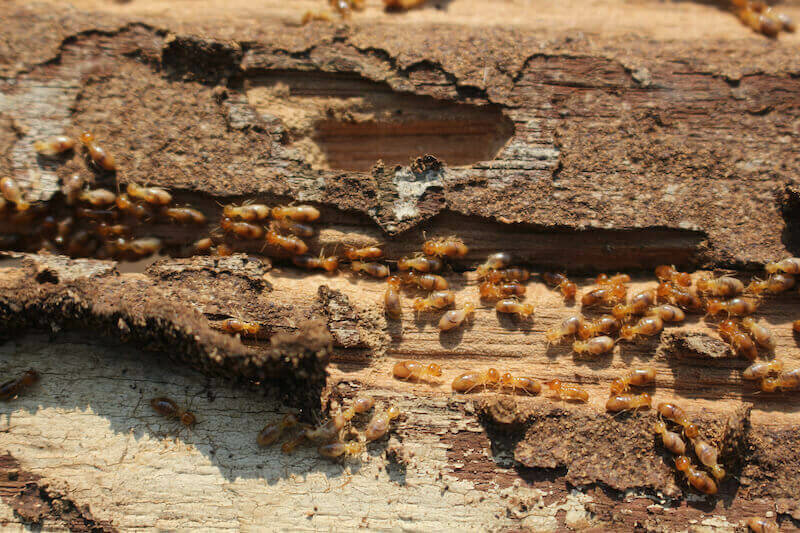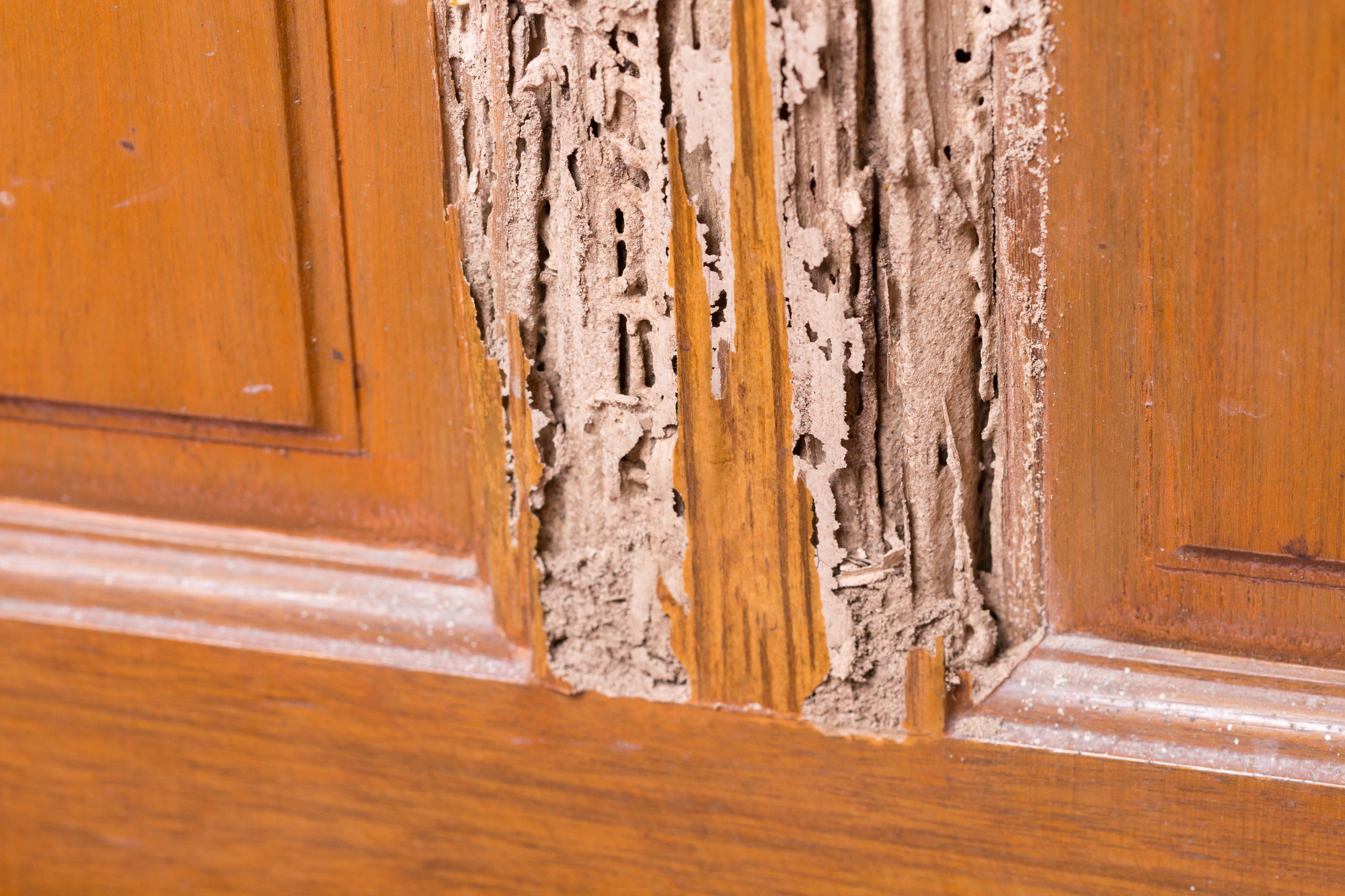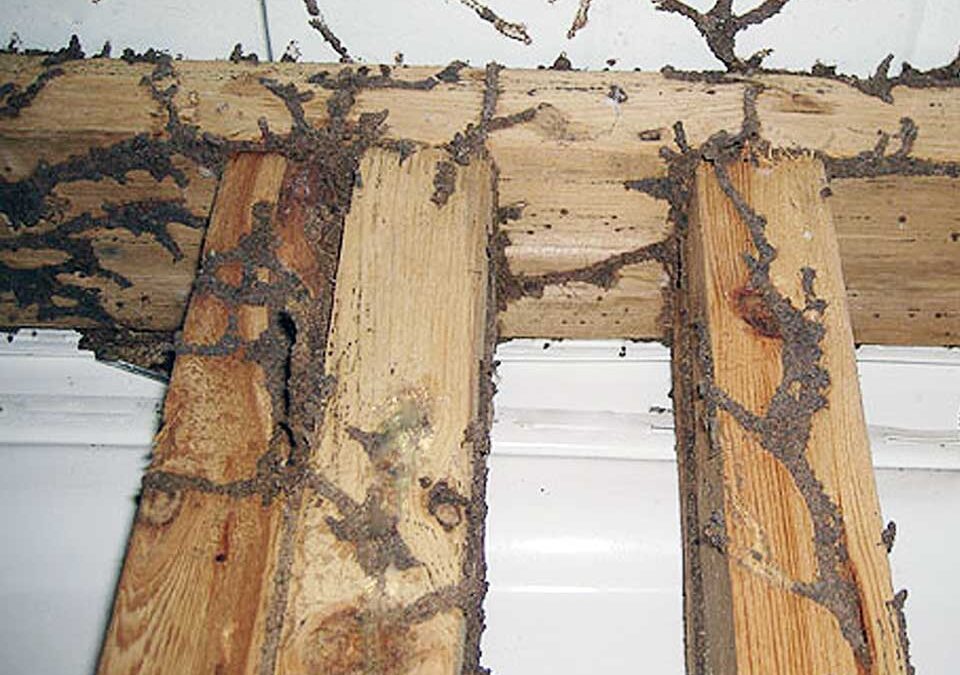Termite Treatments in Florida
Exterminator Services for Coral Springs, Margate, and Coconut Creek
Florida’s subtropical climate – characterized by warm temperatures, gentle winters, and consistent humidity – creates a year-round haven not just for residents and tourists, but also for various pests, particularly termites. These wood-boring insects can quietly infiltrate properties, chewing through supports, floors, or furniture before occupants even realize an infestation is underway. In Coral Springs, along with surrounding communities like Margate and Coconut Creek, detecting and handling termites early prevents extensive damage, hefty repair bills, and occupant unease. This service page details how termites thrive in Florida’s environment, the clear signs they leave behind, and why a professional termite exterminator for termite treatments is your most assured route to safeguarding your home or business. By acting promptly whenever you suspect an intrusion – be it mud tubes or discarded wings – you spare your structure from silent decay and maintain occupant confidence in a pest-free setting.
Why Termites Flourish in Florida

- Mild, Short Winters
In colder states, freezing winters kill off or slow termite colonies for months, halting their spread and reproduction. Florida’s mild winter seldom reaches sustained freezing temperatures, allowing termites to forage and breed nearly year-round. Indoors, steady air conditioning or heating ensures these insects never face climate-induced dormancy or die-offs common elsewhere. - High Humidity and Rain
Termites rely on moisture to survive. Florida’s rainfall and muggy air keep soils and wooden structures damp. Subterranean termites construct mud tubes to travel between soil nests and above-ground wood. Drywood or dampwood termites infest moisture-laden wooden beams or rotting sills. Minor leaks under sinks, behind walls, or from AC lines give termites the moisture needed to thrive indoors. - Minimal Seasonal Dormancy
Termites in northern regions endure partial dormancy or severely limited breeding during harsh winter months. In southwestern Florida, no sustained freeze stifles termite foraging or reproduction. A small introduction can amplify swiftly if occupant or property manager vigilance does not intervene. - Frequent Movement of Goods and Occupants
Corridors like Coral Springs, Margate, and Coconut Creek experience new residents, short-term rentals, or shipments that might bring termite-infested wooden items. Once inside, unnoticed colonies consume beams or floors from the inside out if occupant detection remains partial. Coupled with Florida’s stable warmth, these hidden invaders expand silently. - Abundant Wooden Structures
Whether older homes with wooden rafters or newly built properties featuring wooden framing, Florida architecture commonly uses wood in structural or decorative elements. Direct soil-wood contact or undetected cracks around foundations often provide subterranean termites a convenient entry. Damp or poorly ventilated attics or crawl spaces become prime spots for colonies to grow.
Indications of a Termite Infestation
- Mud Tubes Along Foundations or Walls
Subterranean termites craft pencil-thin, muddy tunnels across concrete, brick, or wood surfaces to maintain humidity while traveling between nest and food sources. Seeing these tubes near foundations, in crawl spaces, or along interior walls strongly signals active termite foraging. - Discarded Wings
Winged termites (alates or swarmers) emerge to find new nesting sites, shedding wings once they settle. Locating small piles of identical, translucent wings on window sills, near doors, or under lights means swarmers have appeared, pointing to an established colony seeking expansion. - Hollow or Damaged Wood
Termites typically consume wood from the inside out, leaving a fragile outer shell. Tapping suspect beams or floors that yield a hollow sound suggests concealed termite galleries. Eventually, these surfaces may split or collapse under stress if not remedied. - Frass (Pellets)
Drywood termites produce six-sided, pellet-like droppings (frass) resembling sawdust or sand grains. Finding piles of these near baseboards, windowsills, or below infested wooden items confirms termite activity. Subterranean termites instead create mud tubes rather than depositing pellets. - Swarming Termites Indoors
During warm months or after heavy rains, you might see winged termites flying near light fixtures indoors. This spectacle indicates a mature colony is present within or adjacent to your structure. Immediate occupant or professional measures help contain them before they form satellite colonies.
Consequences of Delaying Termite Control
- Structural Weakening
Unnoticed termites progressively hollow out wooden beams, joists, or supports, eroding a building’s stability from within. Floors might sag, walls crack, or entire sections become unsafe if occupant detection arrives too late. Early occupant vigilance avoids extensive reconstruction. - Increasing Repair Costs
The longer termites operate, the more wood they devour. Correcting advanced infestations can demand replacing multiple structural components or furniture items. Spotting and eradicating termites early reduces occupant hassle and financial strain. - Discomfort and Concern for Occupants
Knowing that insects quietly consume hidden wood fosters anxiety about potential cave-ins or repeated re-infestations. Proactive termite treatments soothe occupant fears and confirm the structure remains reliable.
Property Value Impact
In real estate transactions, termite damage or uncertain termite reports can derail deals or force sellers to accept lower offers. Thorough, verifiable termite solutions maintain property value and occupant confidence in a safe environment.

Why a Professional Exterminator Is Essential
- Full Inspection and Species Identification
A termite exterminator examines foundations, attics, crawl spaces, and suspicious wood for mud tubes, pellets, or structural flaws. Discerning whether you have drywood, subterranean, or dampwood termites shapes the needed approach, from soil barriers to fumigation or localized injections. - Eradicating Hidden Colonies
Termites often reside behind walls, beneath floors, or in soil. Over-the-counter sprays might kill foraging termites but spare queens or deeper sections. Professionals tackle entire colonies with specialized methods, ensuring no pockets remain. Thorough elimination prevents returning damage weeks or months later. - Targeted Application of Termiticides
Inadequate or haphazard pesticide usage risks occupant exposure and environmental harm without guaranteeing colony collapse. Experts methodically trench or inject termiticides, forming an uninterrupted chemical barrier in the soil or direct wood treatments that kill termites crossing those zones. - Moisture Control and Structural Advice
Because termites rely on moisture, occupant or professional dryness fixes—like re-routing AC condensate or repairing roof leaks—deny them essential conditions. Also, sealing foundation cracks, removing wood-soil contact, or discarding rotted wood hamper termite re-infestation. - Follow-Up Inspections
Since termite eggs or hidden sub-colonies might persist, occupant or scheduled re-checks confirm no survivors remain. If occupant sightings, swarmers, or fresh mud tubes reappear, additional or alternative treatments finalize eradication before severe damage reaccumulates.
Methods for Termite Treatments
- Soil Barrier Applications (Subterranean Termites)
Exterminators dig shallow trenches around the building perimeter, filling them with termiticide that forms a protective barrier. Workers crossing this barrier die, halting colony foraging. For concrete slabs or patios, drilling small holes to inject termiticide ensures no termite bypass remains. - Bait Stations
Slow-acting toxic baits lure worker termites, who then share poison with nest mates, eventually collapsing entire subterranean colonies. Exterminators routinely check station activity levels, replenishing bait as needed until termite presence drops or vanishes. - Drywood Termite Solutions
If occupant or professional inspection locates limited drywood termite pockets, localized treatments—like injecting foams or chemicals into infested beams—may suffice. Widespread or multi-room drywood infiltration often necessitates structural fumigation, saturating every hidden space with lethal gas and requiring occupant vacating for a set duration. - Spot Treatments
For smaller outbreaks (e.g., in one piece of wooden furniture), injecting insecticides or applying localized heat can kill the colony. Occupants often prefer these minimal approaches if the infestation remains contained. - Moisture Management
Because termites thrive on damp wood, occupant dryness steps—replacing rotted wood, sealing roof leaks, or re-ventilating crawl spaces—keeps wood from softening. Likewise, ensuring no direct soil contact with wooden structures denies subterranean termites easy feeding routes.
Service Areas: Coral Springs, Margate, and Coconut Creek
Coral Springs: Known for its family-friendly neighborhoods and occupant turnover, Coral Springs might inadvertently invite termites in secondhand furniture or unchecked home additions. Quick occupant detection—spotting mud tubes or suspicious droppings—plus professional synergy halts expansion from a single corner to multiple floors.
Margate: A suburban mix of older properties and new housing. Damp corners or foundation cracks in older homes can host subterranean termite nests if occupant vigilance or dryness fixes remain limited. Occupant housekeeping—like discarding rotting wood near exteriors—plus robust termite treatments preserve structural well-being.
Coconut Creek: Featuring abundant greenery and natural preserves, Coconut Creek fosters thriving insect populations that feed termite expansions if occupant dryness or property checks lag. Quick occupant measures—like verifying suspicious wood for hollow areas—plus advanced colony removal ensures families or businesses avoid deep repairs from hidden termite invasions.

Why Our Termite Treatments Excel
- Florida-Focused Knowledge
Given southwestern Florida’s mild winter and consistent moisture, occupant dryness efforts—like re-routing AC drainage—paired with strong termite solutions (soil barriers, fumigation, or localized injections) ensure no hidden colony escapes lethal contact. - Targeted, Minimal Occupant Disruption
We apply termiticides or baits in precise spots, like perimeter trenches or direct wood injections, usually letting occupants remain onsite with minimal daily interruption. For fumigations, occupant schedules short vacating periods, returning to a pest-free structure post-ventilation. - Comprehensive Colony Elimination
We address entire termite nests, not just the visible foragers or superficial galleries. By saturating travel routes or nest zones, we remove queens and brood, preventing future expansions. Occupants can confirm success with re-checks or occupant-based monitoring after initial elimination. - Follow-Up and Prevention
Because some termite queens can lay eggs continuously, occupant or scheduled re-inspections remain key to verifying no survivors. Exterminators also suggest occupant dryness fixes—like sealing foundation gaps, removing damp wood piles—keeping new termites from establishing.
Next Steps
Spotting mud tubes near foundations, discovering small, pellet-like droppings under window frames, or noticing hollow-sounding beams? Contact us to learn more or schedule your service. Our termite exterminator approaches in Coral Springs, Margate, and Coconut Creek address termite colonies thoroughly—eradicating queens, destroying hidden infestations, and securing buildings from new invasions. Acting swiftly spares you from advanced structural harm, occupant anxieties, and soaring repair costs.
With specialized solutions—like soil barriers for subterranean termites, fumigation for widespread drywood infestations, or spot injections for limited pockets—property owners preserve structural integrity and occupant well-being. Occupant synergy—such as dryness upgrades, rotted wood disposal, or sealing cracks—stops future termites from sneaking in. Freed from silent wood destruction, you can continue enjoying Florida’s mild weather and local conveniences without the worry of hidden insects eroding your home or business.
Sustaining a Termite-Free Environment
- Fix Leaks and Improve Ventilation: Termites thrive in damp conditions. Repair dripping faucets, ensure attic or crawl space ventilation, and promptly address roof leaks to keep wood surfaces dry.
- Soil-Wood Separation: Keep wooden beams or siding at least 18 inches above the soil. Removing direct soil-wood contact obstructs subterranean termite foraging pathways.
- Check for Rotted Wood: Replace water-damaged or decaying beams or sills swiftly. Damp, softened wood invites termites to feed and expand colonization.
- Store Wood Properly: Keep firewood or lumber piles off the ground, away from exterior walls. If these piles connect to structural wood, termites can transition indoors undetected.
- Routine Monitoring: Glance around baseboards, attic rafters, or foundation lines every few months for mud tubes or droppings. Early occupant discovery triggers simpler occupant or professional fixes before widespread structural infiltration.
By marrying occupant diligence and specialized termite control, southwestern Florida properties steer clear of silent wood destruction and occupant stress. Although Florida’s climate encourages year-round termite breeding, occupant dryness efforts, sealing vulnerabilities, and lethal colony removal guarantee these insects find no stable foothold. Residents and business owners in Coral Springs, Margate, and Coconut Creek thus enjoy their surroundings free from the hidden perils that termite infestations pose.
